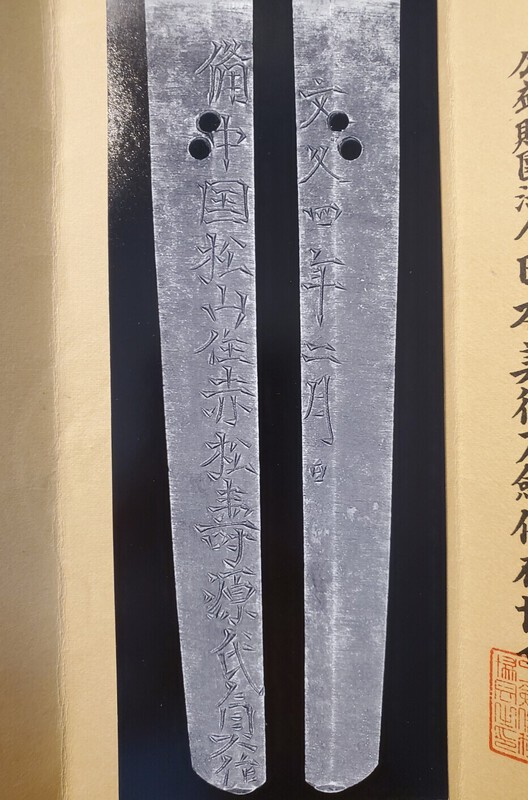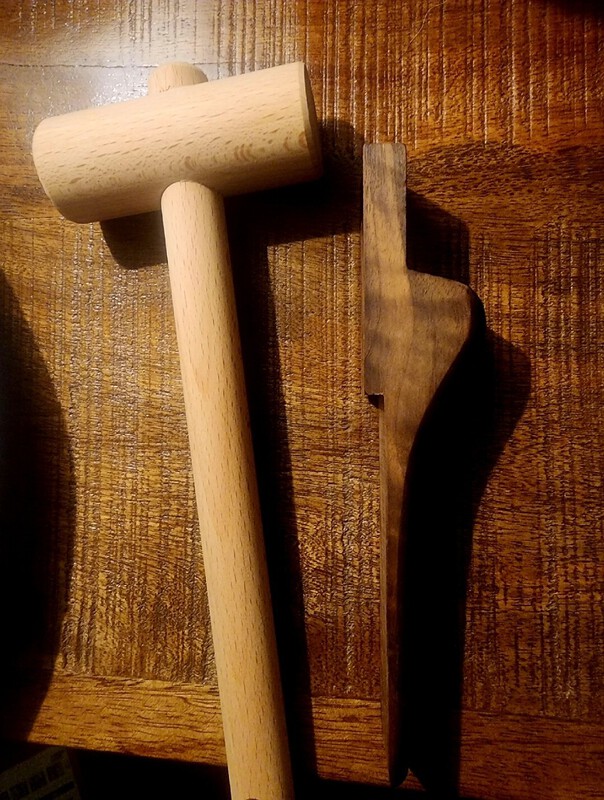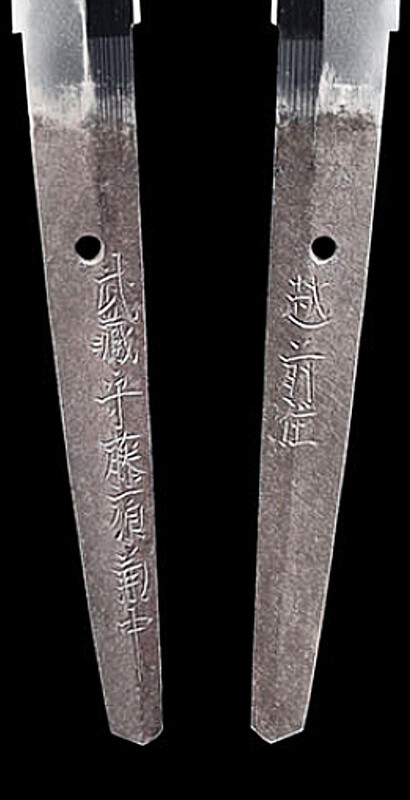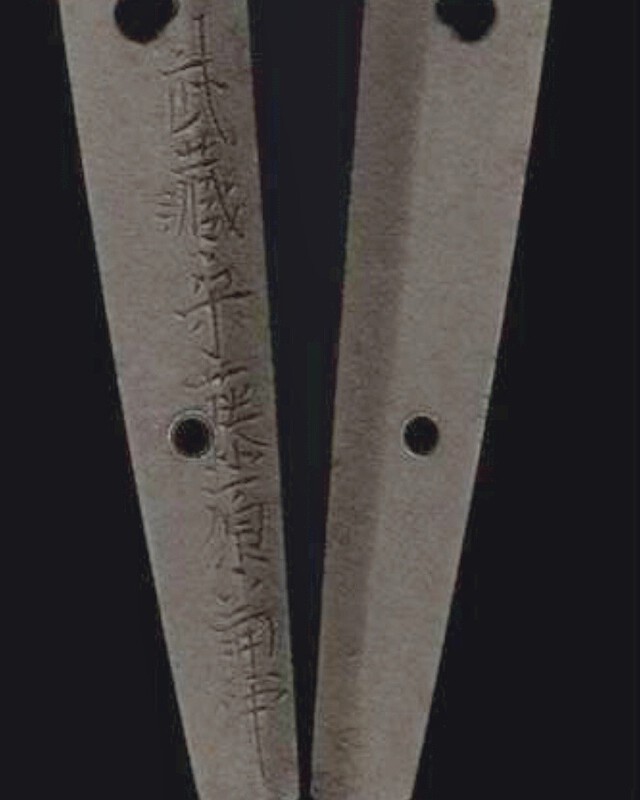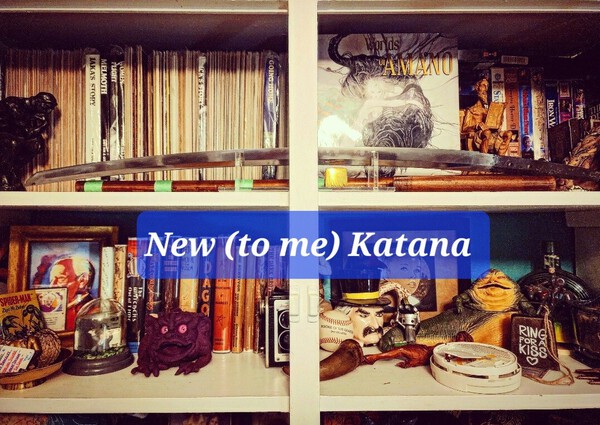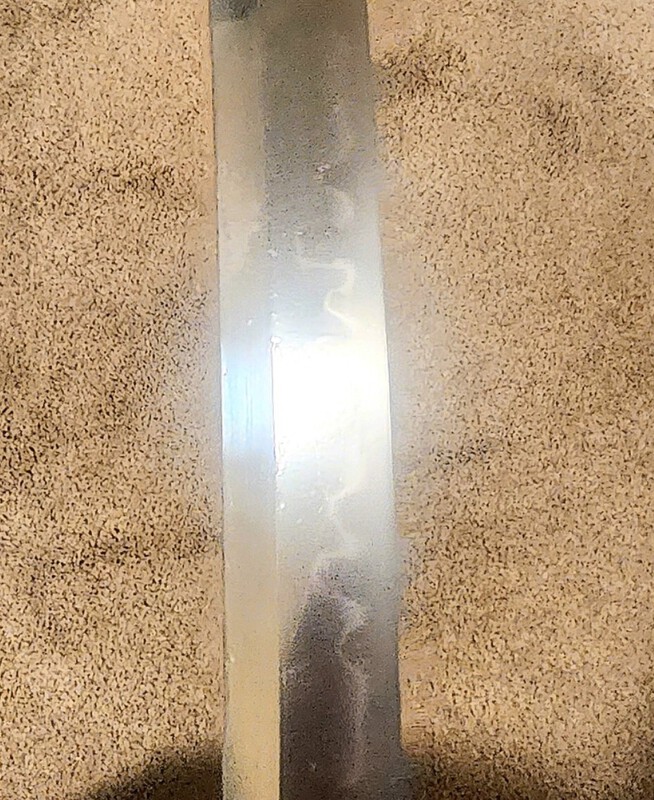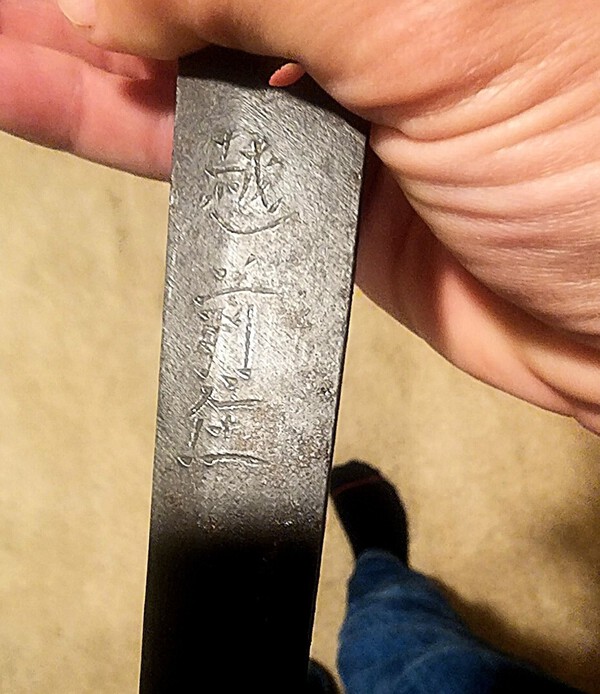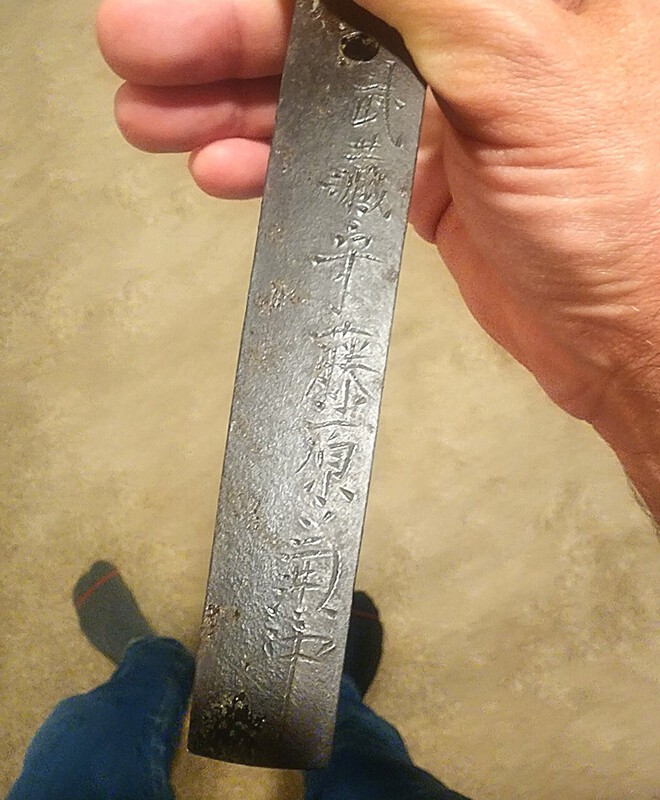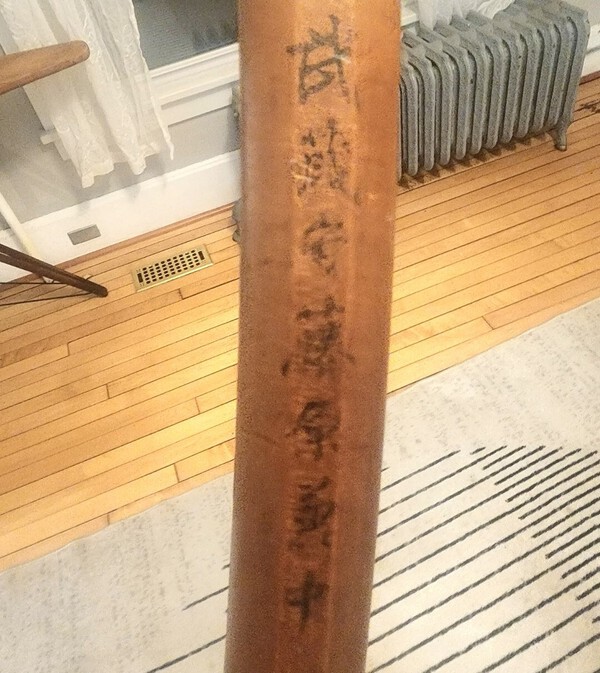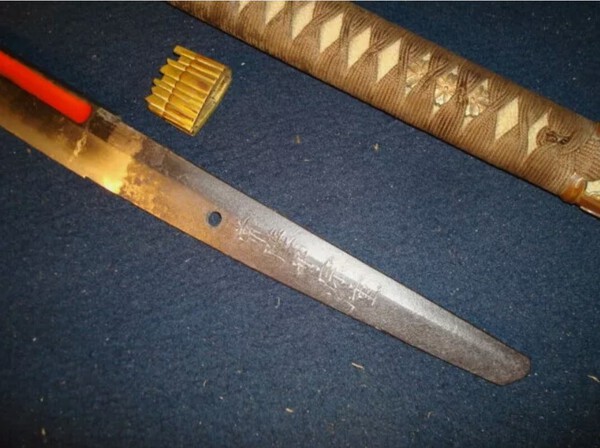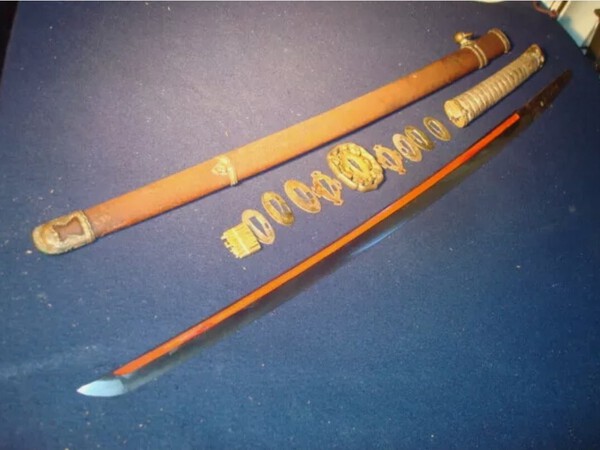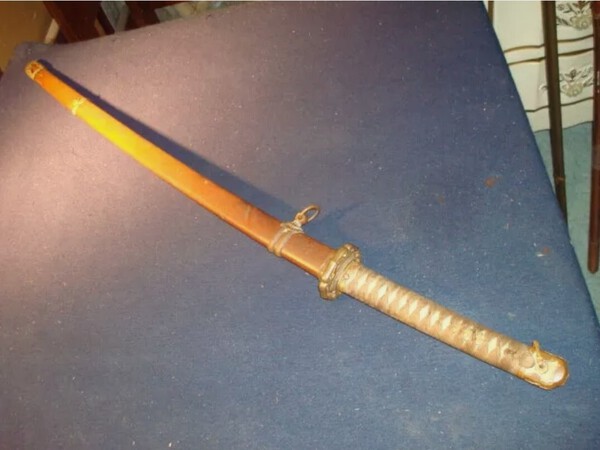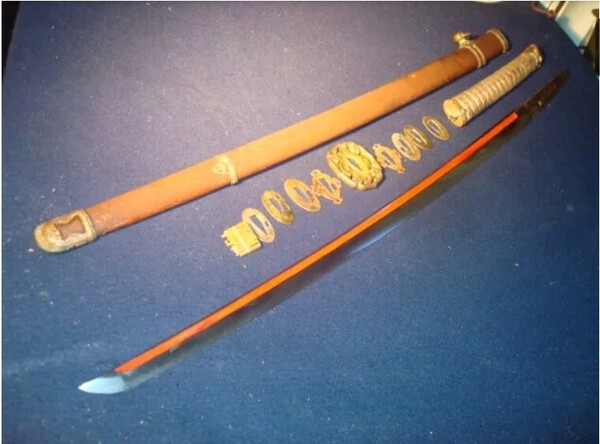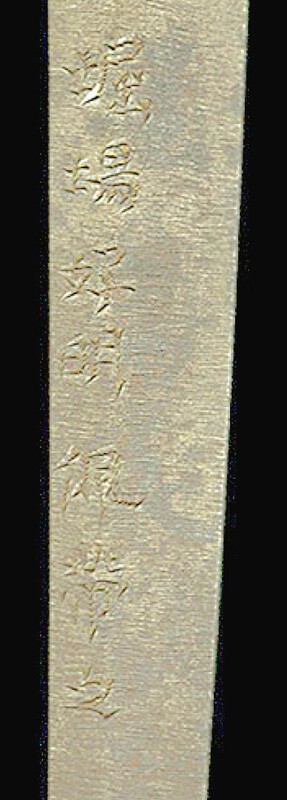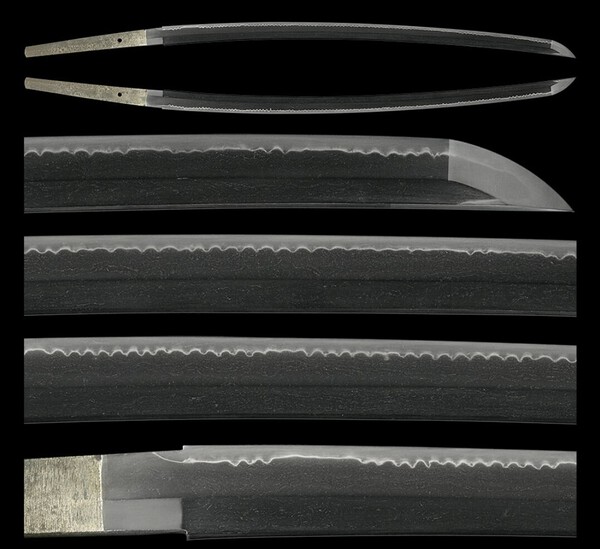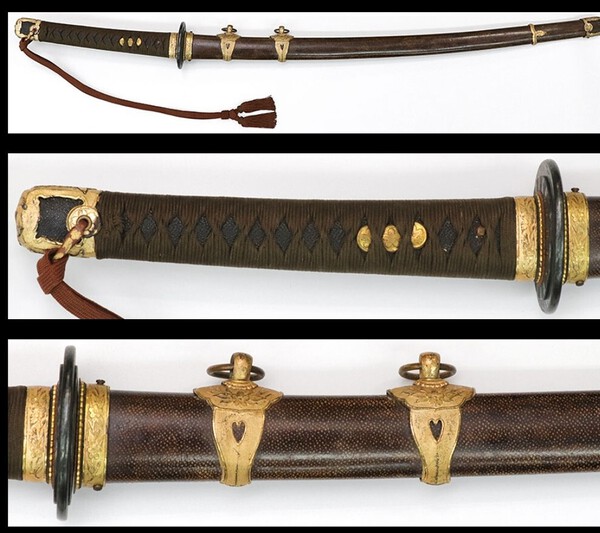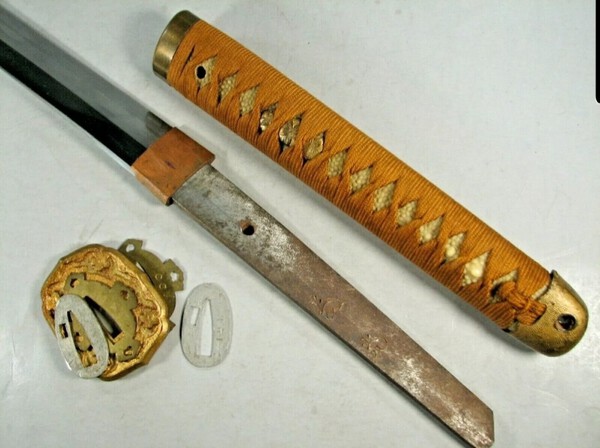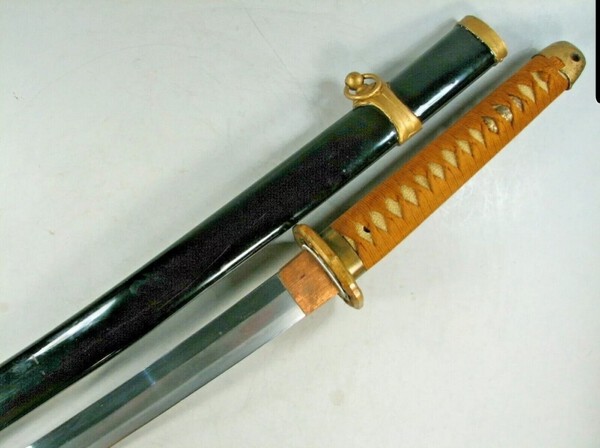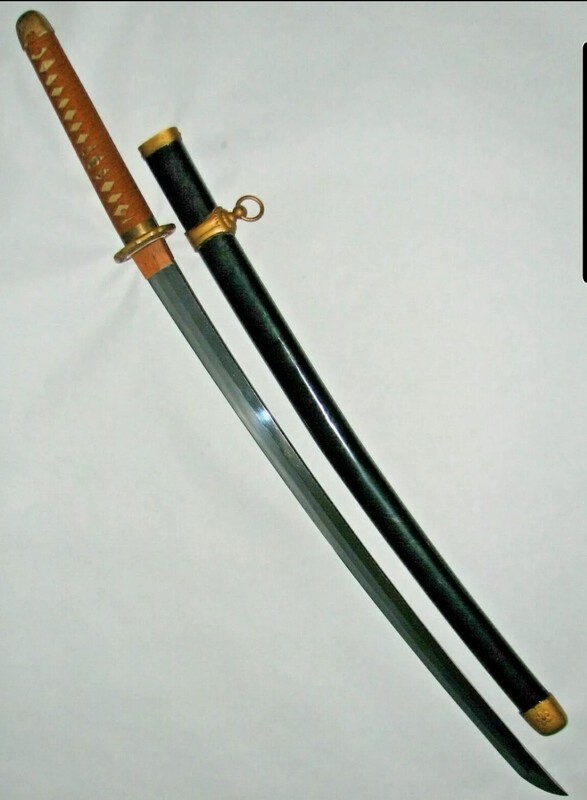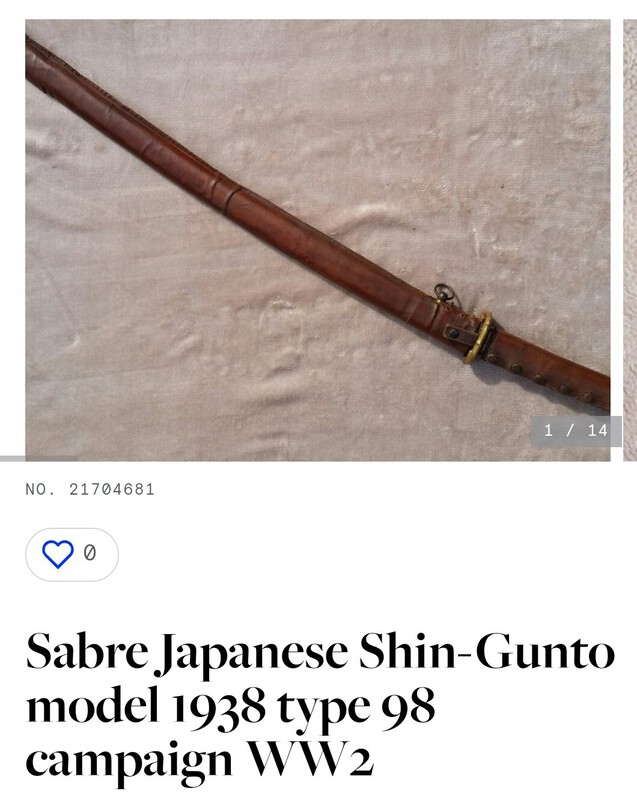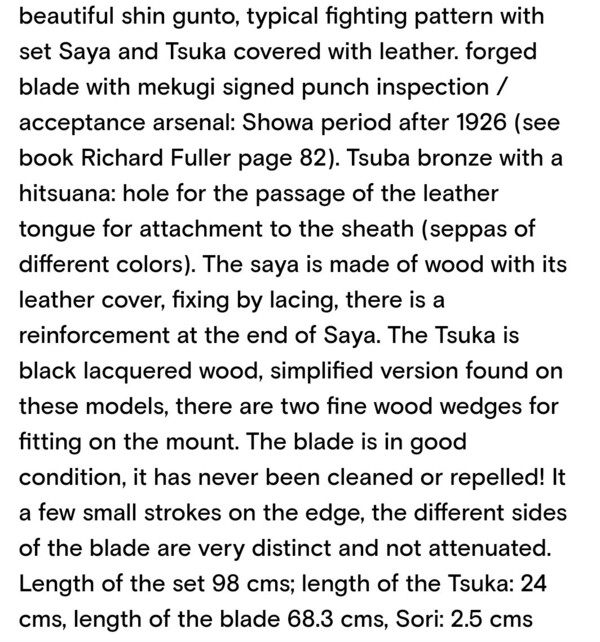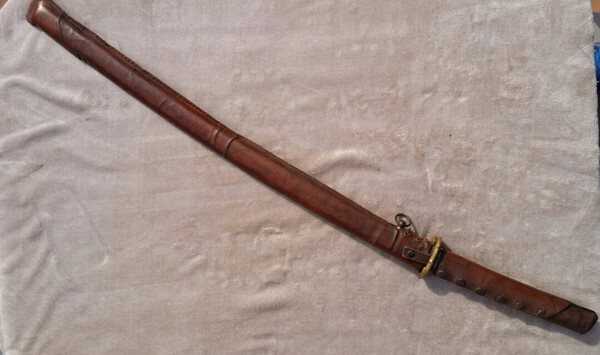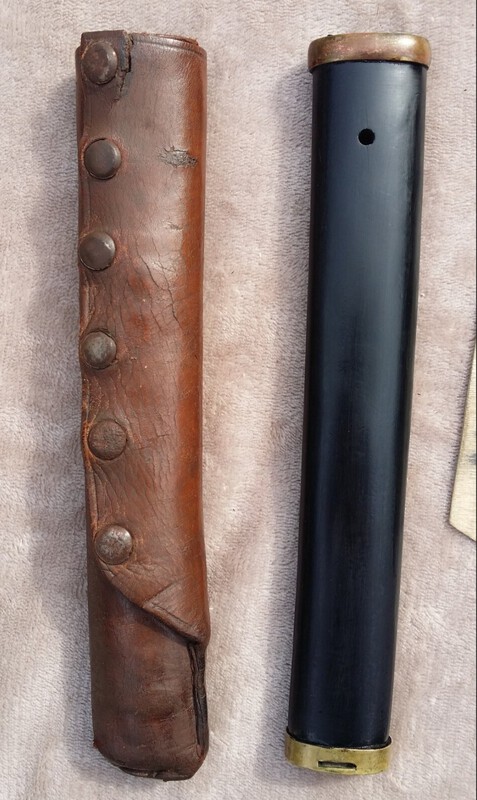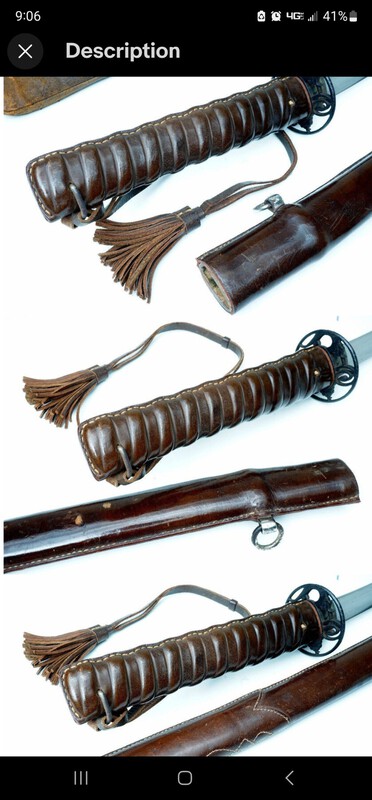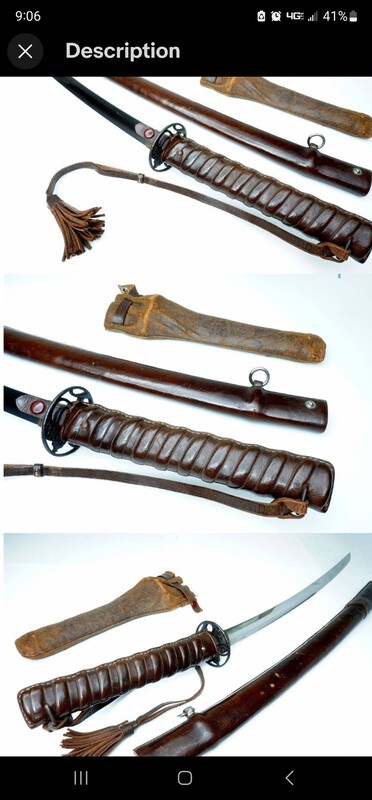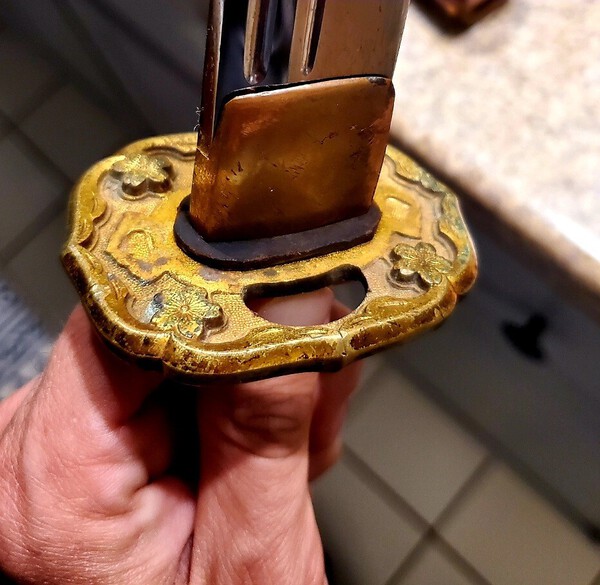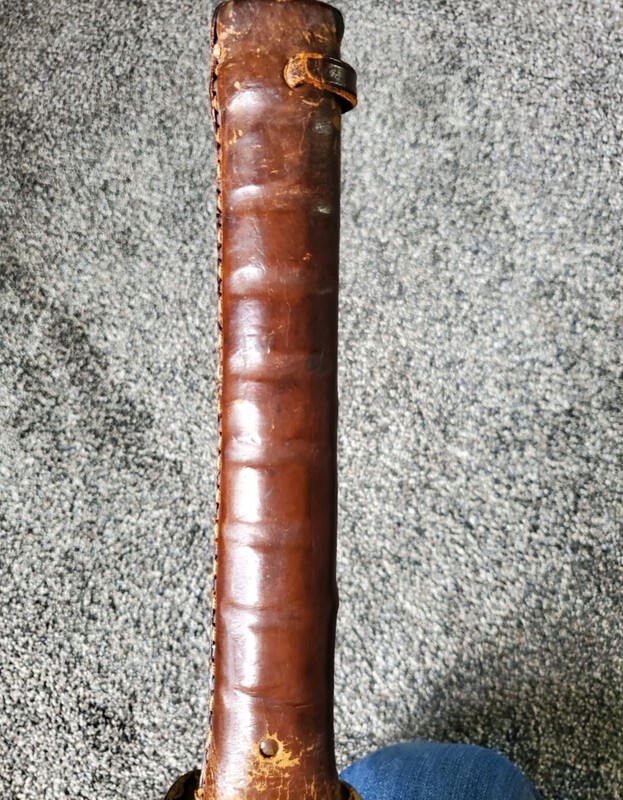-
Posts
805 -
Joined
-
Last visited
-
Days Won
4
Content Type
Profiles
Forums
Events
Store
Downloads
Gallery
Everything posted by waljamada
-
Resurrecting this to see if anyone has any information on this smith? I have been completely unable to find any additional information on him. I also haven't been able to find other blades by this smith. Have two different names for the smith Ive gotten: Bitchu no Kuni Matsuyama ju Akamatsu Kotobuki Minamoto Ujisada Saku 備中國松山住赤松壽源氏貞 bitchu kuni matsuyama ju akamatsu jugen ujisada
-

How to loosen a stuck Habaki?
waljamada replied to HVM's topic in General Nihonto Related Discussion
The best thing I've found is actually this Japanese hammer and leverage device thingy tool (sorry forgot the proper name) that they sell to remove tight tsukas etc...it works just as well on habaki. I believe Grey had some for sale at some point. It's useful to have around for many reasons. -
Even in situations where NBTHK (or NTHK) papers don't "increase the value" they at minimum help get fair market value when time to sell. They make blades easier to sell as buyers like authentication on what they are buying and it adds security. Same goes in most collectibles markets of such things. So essentially having papers even when they may not make increase value in some cases they still help lock in a fair market value that the same blade with no papers may not achieve. For one example, in situations like heavily forged signatures/smiths etc...the papers increase value. Overall papers are nearly always beneficial. It is possible to get katana hozon blades between the 1-2k ranges and hozon you'd be lucky for a full size katana in the 3k range. Juyo can easily be 5 digits...these prices are all on the low ends so that alone says quite a bit.
-

Help on the value of a damaged Katana
waljamada replied to Kyle68's topic in General Nihonto Related Discussion
A Fuji and moon hamon is a cool feature. Always wanted one of those and does add to the package for sure. For sure a relic/war display type piece category. -
It's a great way to make something for short transport or when taking a blade to shinsa as (at least the one time i did it in Chicago) they ask you to bring the bare blade. A temporary solution for a temporary need for those shirasaya-less blades out there. Also for those who have shared some shirasaya reglue knowledge I have now cleaned the old shirasaya just using warm water to remove all the old rice glue and after I let it fully dry over the next few days I will reglue it. Purchased some padded clamps and rice glue. I have noticed through that there will be a small gap at the top of the shirasaya since it looks like a sliver of wood was broken off at some point. Not quite sure what to do with that...perhaps just tape over the gap in a way that the sticky side of the tape doesn't actually touch the shirasaya itself or just leave the small gap and store it all in a katana bag.
-
Alex and Mark, So I did go and buy rice glue online and when I work up the courage and do a bit more study I'll go ahead with the gluing it back together. I am a detailed guy, good artistic skills and just precise enough to actually do a good job. Just have to make sure I have a firm grasp on the task and some safe clamps. Plus rice glue is pretty easily reversible which makes me feel better about it. I'm also going to go the re-glue route because other than the glue failing the shirasaya looks in great shape. The inside of the shirasaya does look like it's been cleaned out but any advice for doing anything to the inside before I reglue it? Not sure if to sand it down a bit but then worry about it leaving micro debris...or if there's a better something or other I should do instead. I used that video to make a paper shirasaya for some blades I took to the Chicago Sword Show for shinsa. Got pretty good at it. I cant help but think that paper storage style long term wouldn't be good. I just see the paper absorbing all the oils and just causing trouble. Don't trust it. I think the bare blade storage/display style I am doing now is safe until i get a new shirasaya made and it's behind glass. I keep it extra well oiled which seems the right thing. Also Mark, drink up and enjoy!
-
I will say the smith seemed, from the few examples online, to prefer a sanbonsugi/gunome-esque hamons but seemed to also dabble with a variety of other hamon styles. There are some with a slight choji/midare flair but I haven't found a duplicate of this blade's hamon by the smith. I'm still early in my research. To me the shape and what its original length appears would fit into his "typical" style/lengths from the available photos/blades I could find online. I read this smith was very active during his 80 year life but I still wasnt able to find that many examples online. For now I am doing what the previous owner did and keeping it well oiled as a bare blade inside a glass display cabinet until I send it to have a new shirasaya made. The split shirasaya could also still work in an emergency. Tempted to reglue it back together but I'm not knowledgeable enough or have the proper rice glue to do it at this time so I will leave all as-is.
-
I recently purchased this blade I believe to be signed Musashi no Kami Fujiwara Kanenaka (武蔵守藤原兼中). Its not condition free but was the first blade I found in the wild in my home state. Blade has a 27" nagasa and was shortened with 2 mekugi ana. Was told it was brought back by a soldier, used to be coated in cosmoline and came in a shirasaya that is split with sayagaki. Has a gold foil cat scratch habaki and overall in decent old polish. Biggest issue is the kissaki where some rust formed from the old shirasaya debris and a small bit broken off the tip. Got it for a worth while price for its condition in my opinion. Have seen some blades of his get Toku Hozon and I believe rated 2.5 million yen so hopefully this blade is not gimei. Any thoughts on the mei or any aspects of the blade? Ill post a video and pictures below of the blade and here is a description of the smith: Link to the Video I took of the blade: https://youtu.be/Olg...?si=zEtgcF8is8Fz81DL This blade was signed by Musashi no Kami Fujiwara Kanenaka(武蔵守藤原兼中) during the early Edo period. There is also an inscription on the backside of the tang, saying that it was made in Echizen province(today’s Fukui prefecture). It is said that Kanenaka was a descendant of Magoroku Kanemoto, one of the most famous swordsmiths in Mino province(today’s Gifu prefecture). He was born in the 8th year of the Keicho era(1603) and lived until the Tenwa era(1681-1684). He originally started his career in Mino province. He forged swords in Echizen province(today’s Fukui prefecture) during the Eiroku era(1658-1670). There was also a record of him forging swords in Edo city. Since this was forged in Echizen, we assume it was created about 340-370 years ago. Echizen Province was prosperous during the Edo period, being ruled by the Echizen Matsudaira clan, a direct retainer of Tokugawa clan who ruled the Edo government. Many skilled swordsmiths moved to Echizen from different regions because of high demand among Samurai who lived there. Among them, there were many renowned swordsmiths who were originally from the Mino province(Gifu prefecture), such as Kanenaka. They are called Echizen Seki swordsmiths. Musashi no Kami was an honorable title that was only given to highly-skilled swordsmiths back then. We believe Kanenaka’s artistry was excellent enough to be recognized back then.
-

Uda Kuninari Katakiriba Katana for sale NBTHK HOZON (KOTO)
waljamada replied to JakeNYC's topic in Swords and Edged Weapons
My kind of blade. Excellent offering! -
Bought a blade from Brandon before and he's got an excellent eye for gendaito blades and is an excellent seller/collector with an aim on the highest quality gendaito smiths. Just sayin...
-
Hey Stephen, I'm curious about the story and wonder how the other's blades came out. I'm having a blade polished currently with Woody and asked for sashikomi as I'm just not convinced with the hadori style. Heavy hadori seems like painting over fine lines with a fat brush. I hope the hamon still shines through at the right light!
-

For Sale: 1938 Special Order Maeda Family sword
waljamada replied to Eric Santucci's topic in Sold Archive
With this blade using the anti rust steel, is it similar to the arsenal anti rust naval blades in that the hamon is cosmetic and no real visible hada? Or was it made with traditional methods and just an untraditional steel? You say it has a visible hada etc...? -

Red Lacquer - Urushi - on Gunto
waljamada replied to Bruce Pennington's topic in Military Swords of Japan
Remembered coming across a type 98 with lacquered bohi blade on eBay maaaany moons ago. Dug through my "sword" screenshots and actually found the pics! -
Greetings all, Hoping for some assistance and thank you very much in advance for any help. The description mentions it was special ordered and wondering if this is reflected in the mei. The ad lists swordsmith Bishuju Mano Kuniyasu as the maker and mentioned as one with a small body of work. Anyone heard of this smith? Please see photos below.
- 1 reply
-
- 1
-

-

ASK (NICELY) AND YE SHALL RECEIVE....
waljamada replied to a topic in General Nihonto Related Discussion
That sayagaki alone is a piece of art! -
Bruce, I think it was a lacquered saya but I don't remember the details. It was on eBay years ago for 2k and no one bid on it. Haven't seen it since.
-
Bruce, Yeah it seems to be a "it was done" and "they do exist". I don't know if anything more will be found out because as you said it may have just come down to choice and whims. The only historical connection I've come across was that mention in one of the descriptions mentioning a 1938 Campaign in China during which I'm sure they didn't just use fully leather fittings as it would then be a wider known attribution....so perhaps "it was done" will do.
-
-
Chris, Yeah came across it on eBay. Blade is in kind of rough shape but the koshirae is in wonderful condition. The ridged wood and leather wrapped tsuka actually has a solidly good grip on it so it is definetly function over form.
-
Did find this. Mentioned leather tsukas as part of a 1938 campaign. Could also be as simple as just repurposing a tsuka wrap as a full tsuka.
-
A few Chicago Sword Shows back I bought a wakizashi in "gunto" koshirae with a fully leather koshirae including tsuka. Never really saw another one until coming across one today snd thought I'd check to see if anyone else has one. Always figured it was just a simple utilitarian build out of either need of assembly speed, lack of resources etc... For example the tsuka construction is simply just ridged wood wrapped in the leather sheath. Used to think it was possibly a "tanker" variation but I think the latest opinion on that is that category may or may not even exist. Is there any additional info on such koshirae? Are they acknowledged as a "type"? First pics are from one on eBay I just across. The tsuba is obviously not gunto. The tsuba on mine is a smaller gunto tsuba. Second sword pics are my wakizashi. Has a mumei blade but NTHK papered to 2nd gen Nobutaka.


